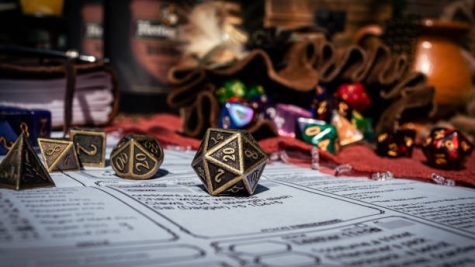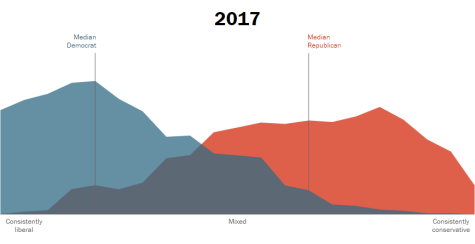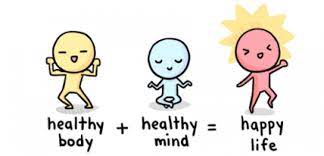Seven Steps to Writing the Perfect Short Story

Do you enjoy writing? Short stories are a great way to write without having to write an entire novel!
November 29, 2021
November is National Novel Writing Month, known to some simply as NANOWRIMO, and many writers challenge themselves to write an entire novel with a wordcount over 50,000 in the month of November. However, most of us simply do not have the time, energy, or resources to write an entire novel in the span of just one month, and that’s okay! Short stories are a great option for someone who wants to write but does not necessarily want to be a novelist. Sometimes though, short stories can prove to be tricky, even to the most experienced writers. So, here are seven steps to writing the perfect short story.
Step One: The Idea.
First, come up with a concrete idea. It can be anything from a short scene to a full-fledged plot. Some people find mapping out their story and ideas to be helpful, while others just prefer to start setting pen to paper. Either way works, it is all about finding which method works best for the writer. Do not be afraid to experiment! Often, most short stories are centered around a character, a particular setting, or a specific event. Inspiration can sometimes even come from the author’s own life experiences, or the lives of others. If a writer is still stumped, just typing in ‘short story ideas’ or ‘writing prompts’ into a search engine can help with getting those ideas rolling. The great thing about short stories is that they have no need for a meticulously developed and thought-out plot like novels, short stories are easily one of the best forms of writing to just roll with.
Step Two: The Execution.
Once a writer has an idea, the next step is to start executing it. The great thing about short stories is that they have no need for a meticulously developed and thought-out plot like novels, short stories are easily one of the best forms of writing to just roll with. However, a short story should still contain all the elements of plot, just much more condensed. A short story should start with an introduction to your character(s) and the setting, before quickly moving on to the initiating event. From there, build events up until the climax of the story, immediately following with a wind down and resolution. As popular American novelist, and writer of three short story collections Kurt Vonnegut is credited to have said, “Short stories should start as close to the end as possible.”
Now that the rules have been presented, don’t be afraid to break them and experiment! Some of the best short stories have been made when authors have strayed from the confines of the typical structure found in most writings. Playing around with the point of view and the order of a story can make the reader’s time spent much more rewardingly and can lead to a much more interesting story overall.
Step Three: The Beginning.
Now, it’s time to start the story. Put the pen to paper, or fingers to the keyboard if that’s the writer’s preferred way of working. It’s best to always hook the reader from the first sentence and finding a good way to start a story can often prove to be the most challenging. There are several good ways to accomplish this, the first of which is throwing the reader headfirst into the action from the first sentence. It is a great way to grab attention and ensure that the reader keeps reading for more information. A writer can also begin with a picture of vivid imagery, making the reader envision the story in their mind. Another great way is to use a tool called a hook, which can even just be a short sentence. A hook works by immediately making the reader try and figure out the rest of the information, and then they keep reading in order to find out more.
Step Four: Writing.
After a story has been started appropriately, just go for it! Most writers don’t edit as they write, instead choosing to save the editing for after so that their full attention is focused on the story at hand, not the words themselves. A story doesn’t have to be perfect, or even fully coherent at this stage, just having words on the page is good. A few spelling mistakes or a grammatical error or two are not the end of the world, that’s what editing is all about. It’s also important to not have the story be overloaded with backstory or overly infused with detailed descriptions of every little thing. Small subtext and context clues should be enough for a short story. That’s not to say that a writer cannot use backstory in the story itself, it is just important that writers don’t weigh their story down with too much backstory and unnecessary descriptions. Do not feel like the rules are stopping you from getting your ideas down onto paper, if they are, ignore the rules completely. Throw them out the nearest window if needed. Just sit and write, not worrying about the final product just yet. If anything needs to be fixed, it will be during the editing process.
Step Five: The Ending.
Ending a story can also be hard. Finding a satisfying way to end a story that leaves the reader happy is a difficult feat to accomplish indeed. However, there are ways to do it. Most normally involve showcasing character growth, how the character has changed over the course of the story, or how the reader and/or other characters perception of the certain character has changed. Sometimes a twist at the end will be enough to have your reader satisfied, but also left grasping at straws in the way only twist endings can. In some cases, something entirely different will work, it is entirely dependent on the story and the author. In any case, having other people read the story can help point out any weak spots in the ending itself, as well as the rest of the story.
Step Six: The Editing
While for some writers, editing their story is the practical bane of their existence, some find it relaxing. Always start by rereading the story at least once if not several more times before starting to edit. Once the story has been reread, this is the step where the author can worry about things such as, but not limited to:
Word choice – The way certain words have an impact on the reader, normally through connotation and subtext, as well as through symbolism.
Verb Tense – This is a big one. Do not use both past and present tense in the same story (ex. Using running in one sentence and walked in the next), it just makes it much more confusing for the reader and is much harder to read. Using all the same tense makes a story much neater, cleaner, and more polished overall.
Punctuation – Especially when it comes to compound sentences, or areas where commas or semicolons are helpful. Avoiding run-ons will also make the story more polished and professional. Capitalization is always important.
Sentence Structure – Use varying sentence lengths and types, as well as mixing up whether you start your sentences off with nouns, verbs, or adverbs can make a short story much more interesting and less dull.
When it comes to editing, oftentimes common sense can be used to sort out most of the mistakes and errors. Using a program like Microsoft Word or Google Docs with a built-in editing program can help catch most of the errors. Just keep in mind that the computer isn’t always write when it comes to human expression and in the end the final call is up to the writer. Sometimes it can take several rounds of editing to get a story to where the writer wants it to be, and sometimes it barely takes any editing at all. There is no real baseline or average, it is whatever the author wants and feels is right for the story. Make sure that the story doesn’t go off on tangents and sticks to one plot and mood and eliminating sentences that get in the way of that is often the way to go. The plot should flow smoothly, and any inconsistencies and grammatical errors should be fixed during this stage.
Step Seven: Sharing.
Sharing a story with others is a vital way that writers can get feedback on their writing and can often take place both during and after the editing stage. Readers can let the author know their thoughts on the story, as well as any areas that the writer has for growth and improvement. Once a writer is pleased with their story, they can start allowing other people to read it just for the sake of the readers’ enjoyment, instead of for the purpose of finishing the editing process.
Writers at BDHS can also share their writing with the school by submitting it to the literary magazine by emailing their submissions to [email protected].










